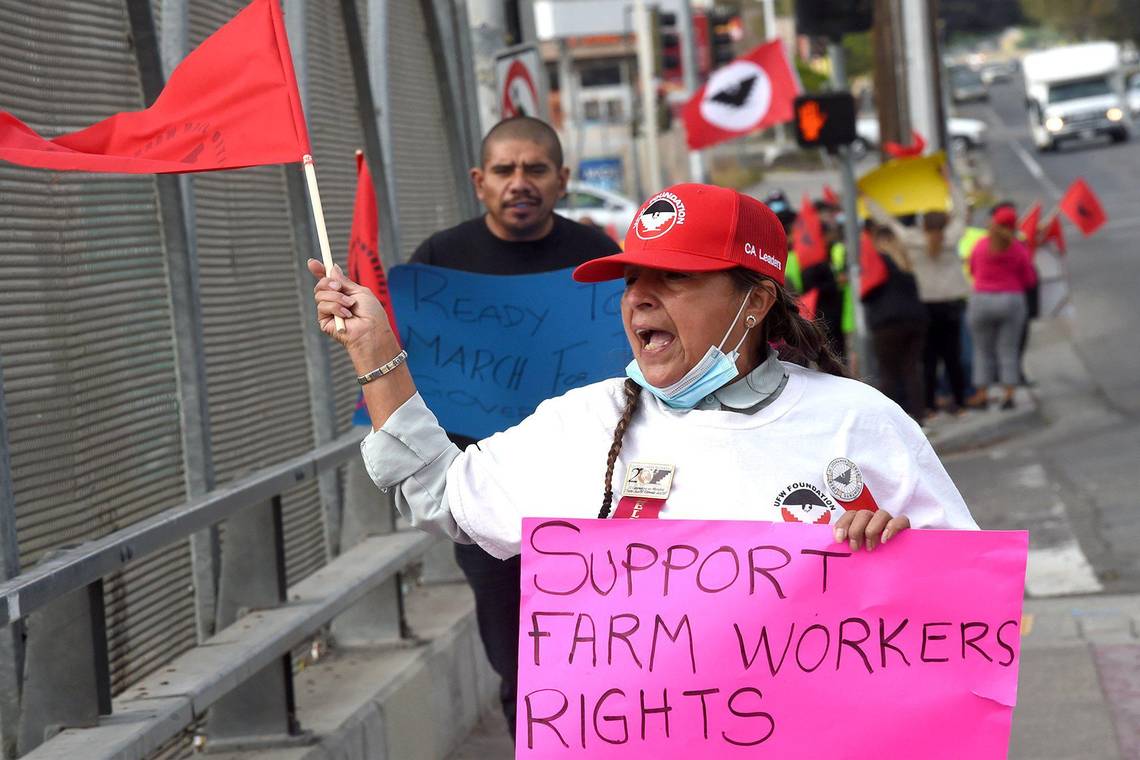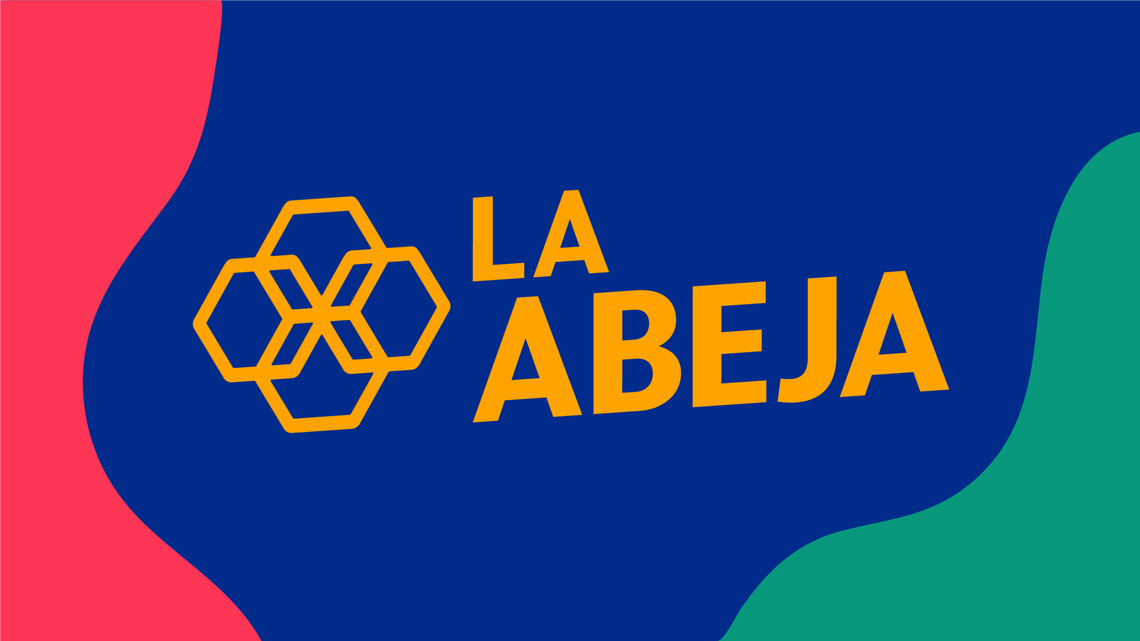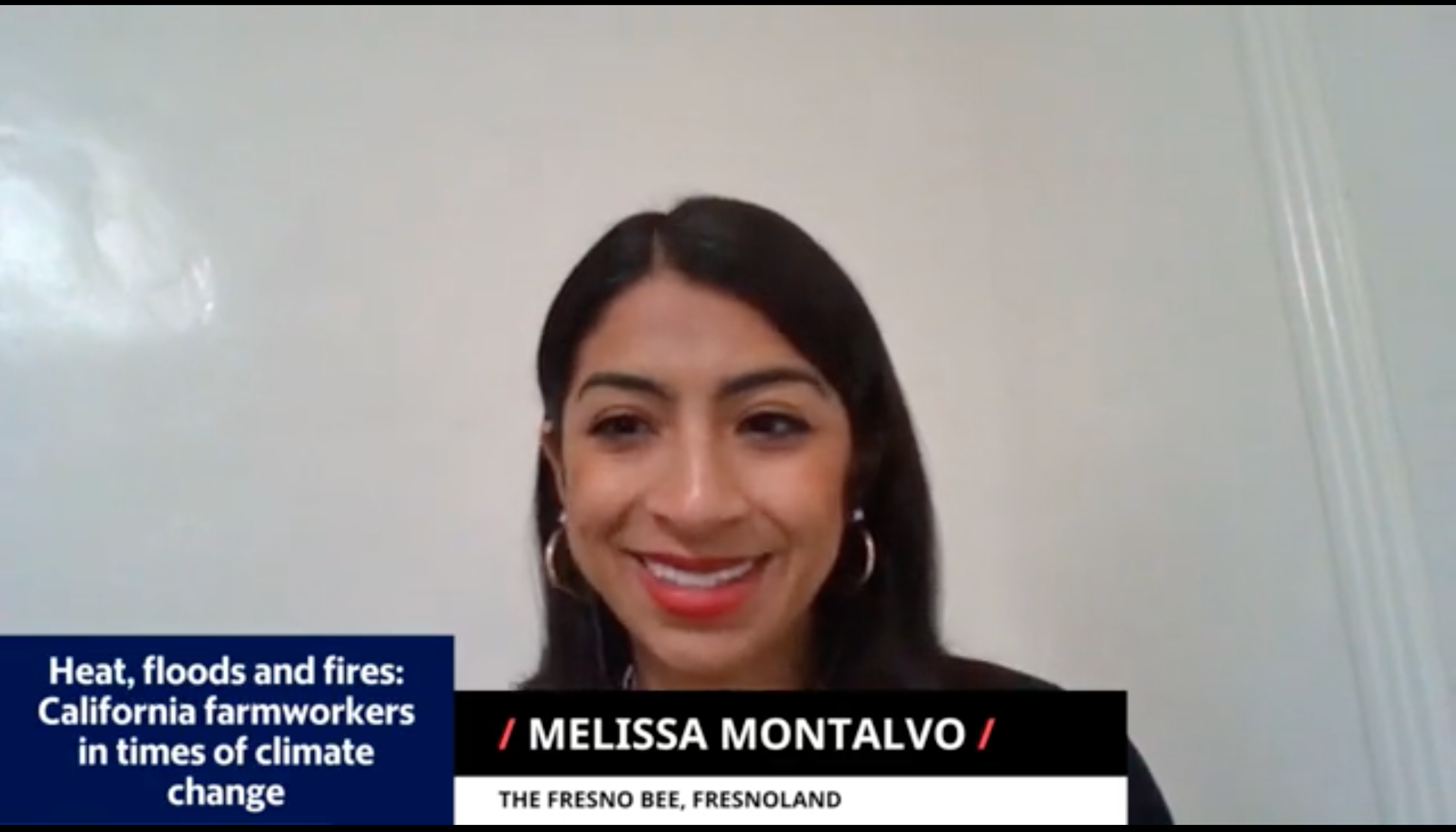4 ways The Fresno Bee and ‘La Abeja’ serve and engage with Latino audiences
Rebecca Plevin and Melissa Montalvo, The Fresno Bee,
Farmworker Lourdes Cardenas marches across Highway 99 on Fresno Street, as she leads the march on Cesar Chavez Day, March 31, 2022, to urge Gov. Gavin Newsom to sign the Ag Labor Voting Choice Act, providing more choices in how farm workers can vote in their union elections. (Photo by John Walker/The Fresno Bee)
Here’s an idea to steal and adapt: Learn how The Fresno Bee improved engagement with Latino audiences through regional collaboration, experimentation with new story topics, newsletters and virtual events.This is a series on Better News to a) showcase innovative/experimental ideas that emerge from the Knight-Lenfest Newsroom Initiative and b) share replicable tactics that benefit the news industry as a whole.
This “win” comes from Rebecca Plevin, formerly an editor at The Fresno Bee, and Melissa Montalvo, Latino communities reporter at The Fresno Bee. The Fresno Bee participated along with fellow McClatchy newsrooms The Sacramento Bee, The Modesto Bee and Vida en el Valley in the Communities Sprint in 2022 for alumni of the Table Stakes Local News Transformation Program.
The Fresno Bee serves readers in California’s central San Joaquin Valley, a majority Latino region that’s home to some of the most agriculturally productive land in the world. But we know our work hasn’t always centered our Latino communities or reflected the community’s rich diversity. We also know that our future as a digital media company depends on our reaching and being relevant to our entire community. Here are four ways that The Fresno Bee – with our sister publications The Sacramento Bee, The Modesto Bee and Vida en el Valle – is placing diverse Latino experiences at the center of our news coverage.
Our journalists serving the Latino community meet weekly
More than two years ago, a Sacramento Bee editor realized that the McClatchy Company had recently hired three bilingual reporters to cover Latino communities in California’s Central Valley. The three positions — one each at The Fresno Bee, Modesto Bee and Sacramento Bee — were new, made possible through grant funding. He invited the reporters and their editors to meet weekly to share strategies for navigating this new beat. This initial team included three Latina reporters but no Latino editors — a gap that we acknowledge and are working to address.
Since then, our team of California journalists focused on Latino communities — known as “La Abeja,” or “The Bee” in Spanish — has met weekly to brainstorm story ideas, share sources and collaborate on engagement events. The team has grown to include a reporter and an editor from bilingual newspaper Vida en el Valle. The addition has proven critical: The two journalists have earned readers’ trust over decades of experience covering Latino communities in the region, and generously share their knowledge and tips with the rest of the team. A Latina audience growth producer also joins our meetings and helps ensure that our stories and newsletters are reaching the widest audience possible.
The virtual meetings provide an opportunity to discuss current topics, from the rise of Mexican regional music to the experiences of LGBTQ+ Latinos. At a time when our reporters are still primarily working from home, the meetings have also become an inclusive space for our Latino journalists to find support, camaraderie and community.

A Fresno Rainbow Pride Parade participant shouts during the event in the Tower District on June 3, 2023. (Photo by Juan Esparza Loera/Vida en el Valle)
We’re experimenting with story topics
We’ve learned that our stories should be as diverse as the communities we serve. While immigration and farmworker issues remain important coverage areas, our La Abeja reporters have also seen great success writing stories for an English-speaking Latino audience related to labor, business, education, food and culture. We’ve found large audiences for journalism about street vendors, local TikTok stars and a huge new Catholic church. And we’ve found readers for enterprise reporting on topics ranging from workplace fatalities to the bankruptcy of one county’s only hospital.
We’ve also seen the value of regional collaboration: Last year, our team worked across markets on coverage of a 335-mile march that aimed to call attention to a state bill related to farmworker union voting. The march went straight through our coverage areas, so our reporters provided comprehensive coverage of the event kickoff, feature stories about participants, legislative updates from Sacramento and in-depth analysis after the governor signed the bill.
We share these stories through our newsletter (more on that below!) and our La Abeja account on X, formerly known as Twitter. On X, we share stories of interest to Latinos in Central California, promote the articles featured in our weekly newsletter and repost our team’s work.
As the La Abeja team has reached new audiences with these stories, editors in our newsrooms have taken notice. These stories now get the same level of support — including email and push alerts — as those written for The Bee’s more general audiences.

Five journalists across three newsrooms take turns writing “La Abeja.”
Our weekly newsletter is for and by California Latinos
We launched La Abeja, our weekly newsletter written for and by California Latinos, more than two years ago. La Abeja provides our journalists with an opportunity to engage directly with our audience.
Five journalists across three newsrooms take turns writing the newsletter. It usually opens with a behind-the-scenes look at recent reporting or a personal narrative, and also features curated links to the team’s great work, in English and Spanish. We think about our audience as 20- to 40-year-old college-educated Latinos who are civically and politically engaged and could become subscribers in the future.
As the newsletter has grown, we’ve received story tips and plenty of positive comments. In fact, one reporter wrote about how her sister incorporated Mexican culture into her wedding in Singapore, and received feedback from the Mexican Consul General in Fresno and the Fresno State president – proof that local Latino leaders are reading our work.
Since we launched the newsletter in July 2021, more than 2,800 people have subscribed — and it’s a devoted readership. Our internal data show that La Abeja’s open rate is about 45% higher than the company average; the click rate is about 10% higher.

Melissa Montalvo, who covers Latino communities for The Fresno Bee, participates in a virtual live event on impacts of climate change on farmworkers in March 2023.
Live events prove there’s an audience for Latino-centered news
The La Abeja team has presented two live, virtual events in the past year. The first one, just before the 2022 midterm election, focused on Latino political power. The second one came weeks after California experienced historic rainfall and flooding, and featured discussions about the impacts of climate change on farmworkers.
Not only were these events impeccably timed, they also featured a great lineup of guests, including lawmakers and experts. The events proved there is an audience that is hungry for smart, Latino-centered news events. The climate change event, for example, was streamed across multiple sites and social media accounts and amassed more than 5,000 views and led to 93 additional newsletter subscriptions. The events also increased the visibility of our La Abeja team. And they’re fun!

Laura S. Diaz, who reported on Latino communities for The Fresno Bee and the Central Valley News Collaborative at the time, and Juan Esparza Loera, the editor of Vida en el Valle, participate in a virtual live event focused on Latino political power before the 2022 midterm elections.